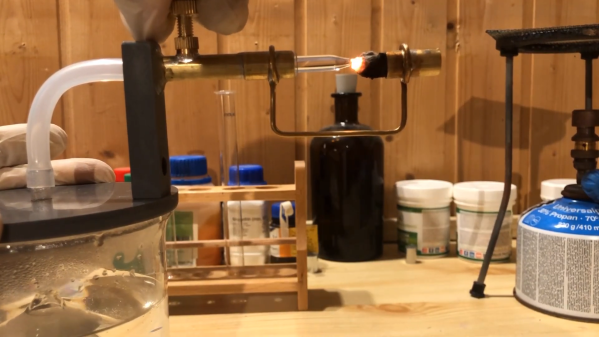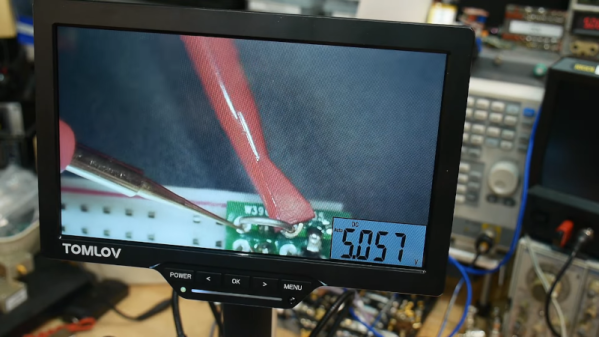With our mass-produced butane lighters and matches made in the billions, fire is never more than a flick of the finger away these days. But starting a fire 200 years ago? That’s a different story.
One method we’d never heard of was Döbereiner’s lamp, an 1823 invention by German chemist Johann Wolfgang Döbereiner. At first glance, the device seems a little sketchy, what with a tank of sulfuric acid and a piece of zinc to create a stream of hydrogen gas ignited by a platinum catalyst. But as [Marb’s Lab] shows with the recreation in the video below, while it’s not exactly as pocket-friendly as a Zippo, the device actually has some inherent safety features.
[Marb]’s version is built mainly from laboratory glassware, with a beaker of dilute sulfuric acid — “Add acid to water, like you ought-er!” — bathing a chunk of zinc on a fixed support. An inverted glass funnel acts as a gas collector, which feeds the hydrogen gas to a nozzle through a pinch valve. The hydrogen gas never mixes with oxygen — that would be bad — and the production of gas stops once the gas displaces the sulfuric acid below the level of the zinc pellet. It’s a clever self-limiting feature that probably contributed to the commercial success of the invention back in the day.
To produce a flame, Döbereiner originally used a platinum sponge, which catalyzed the reaction between hydrogen and oxygen in the air; the heat produced by the reaction was enough to ignite the mixture and produce an open flame. [Marb] couldn’t come up with enough of the precious metal, so instead harvested the catalyst from a lighter fluid-fueled hand warmer. The catalyst wasn’t quite enough to generate an open flame, but it glowed pretty brightly, and would be more than enough to start a fire.
Hats off to [Marb] for the great lesson is chemical ingenuity and history. We’ve seen similar old-school catalytic lighters before, too.
Continue reading “Lighting Up With Chemistry, 1823-Style” →













